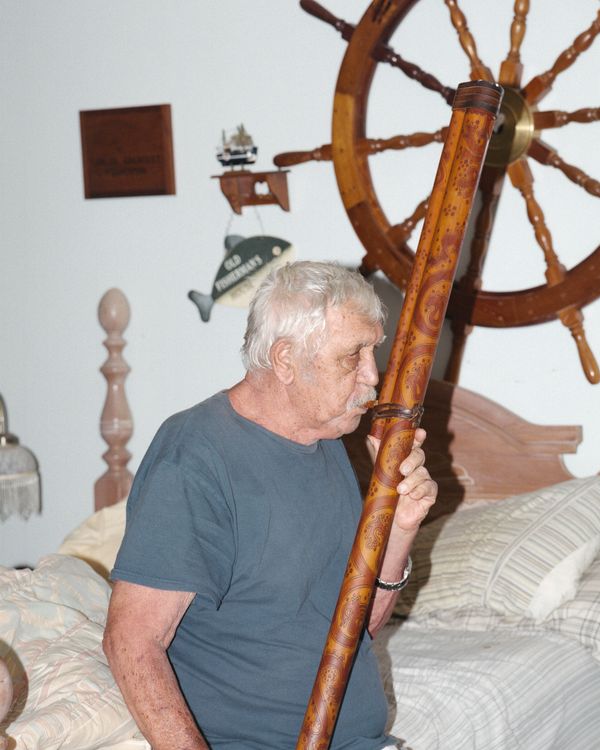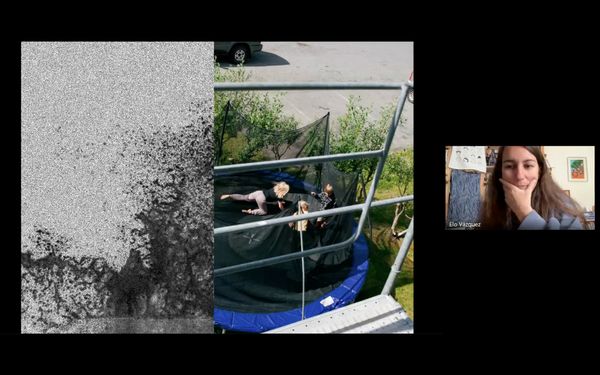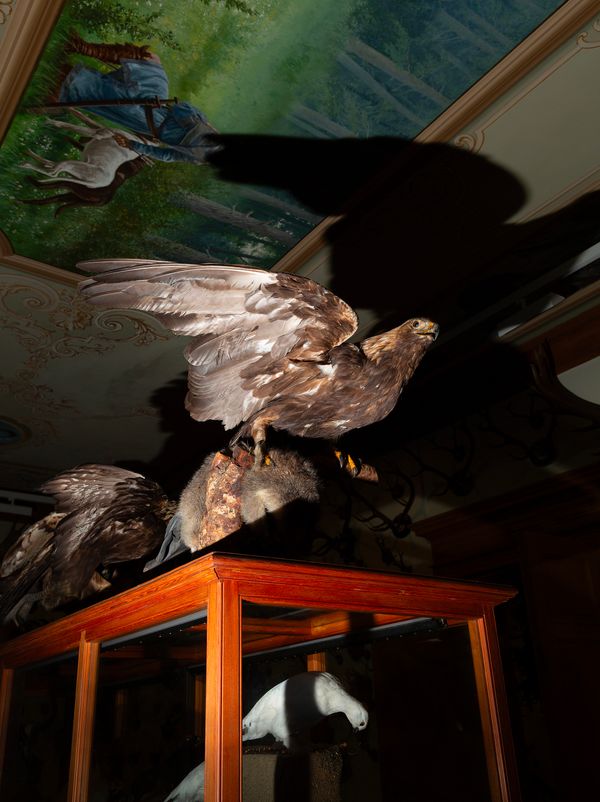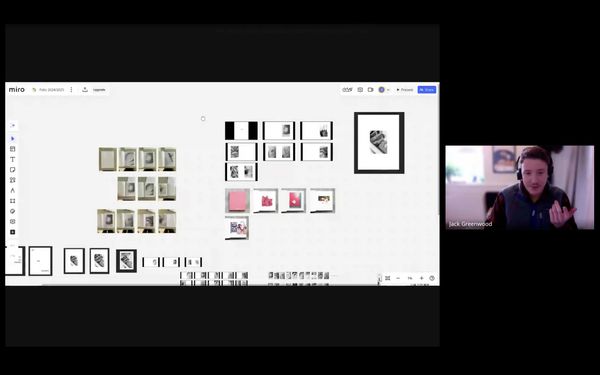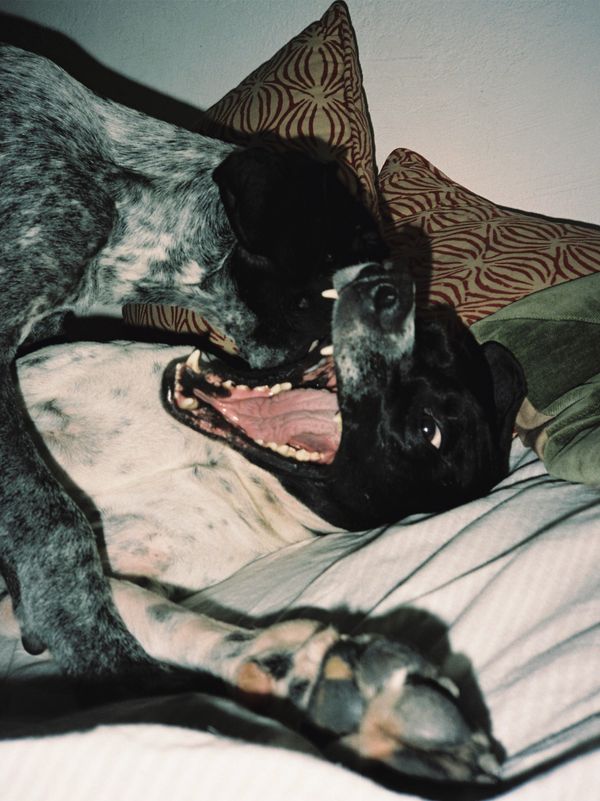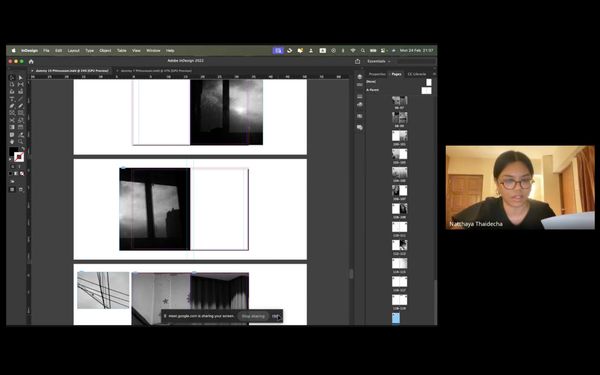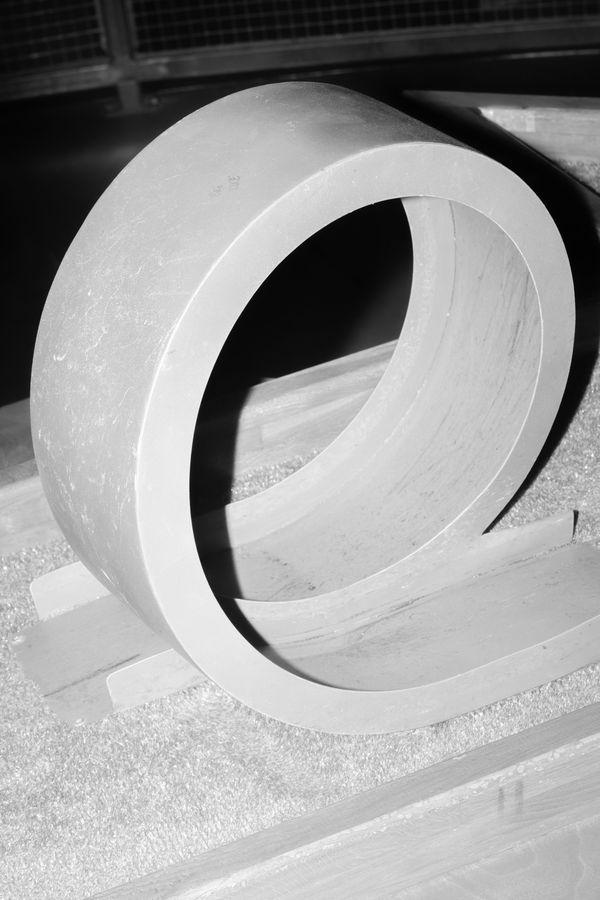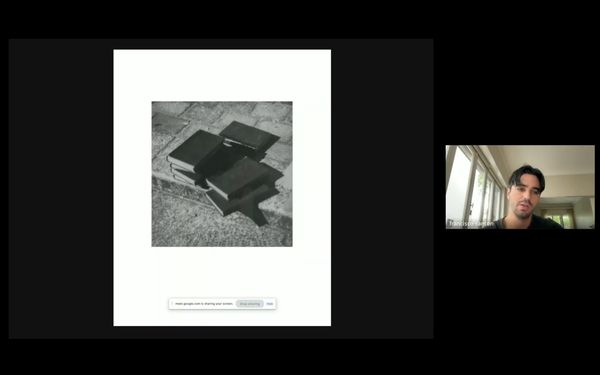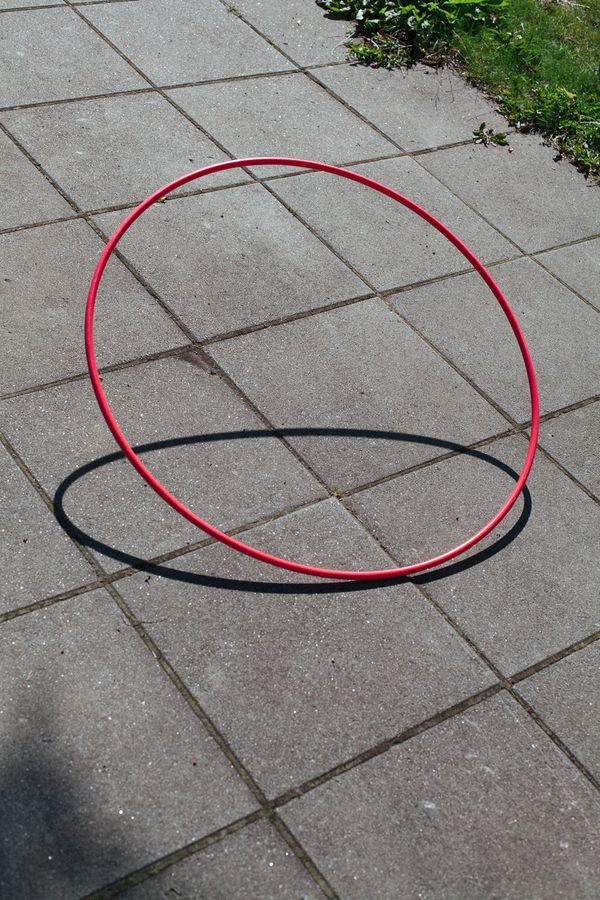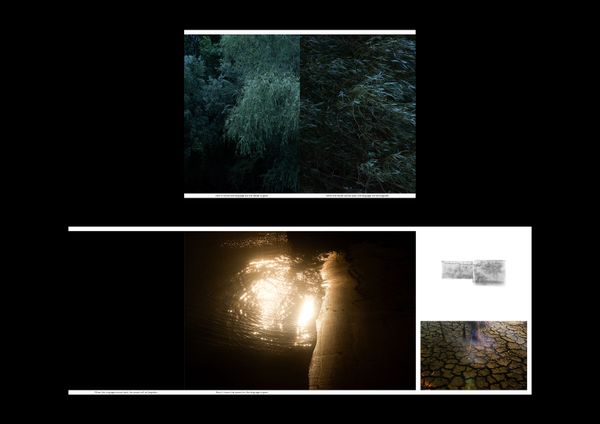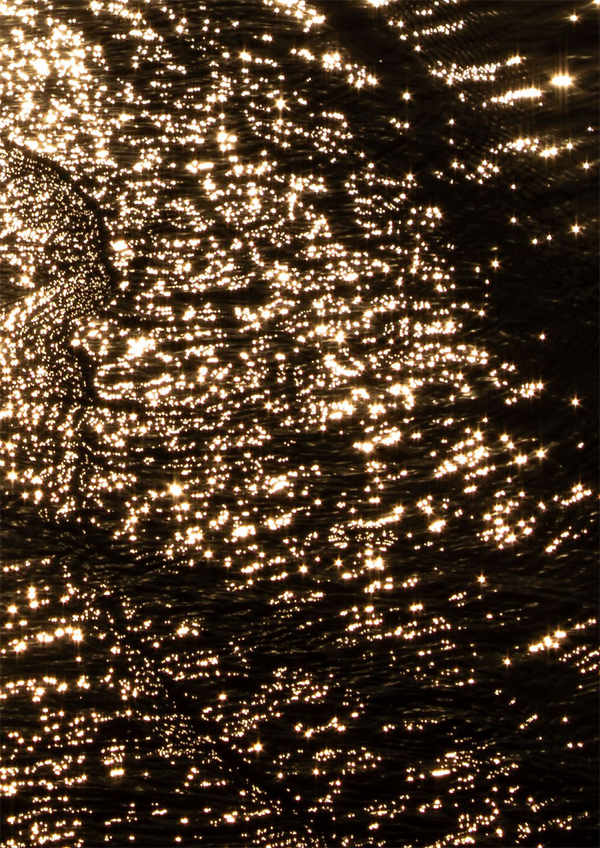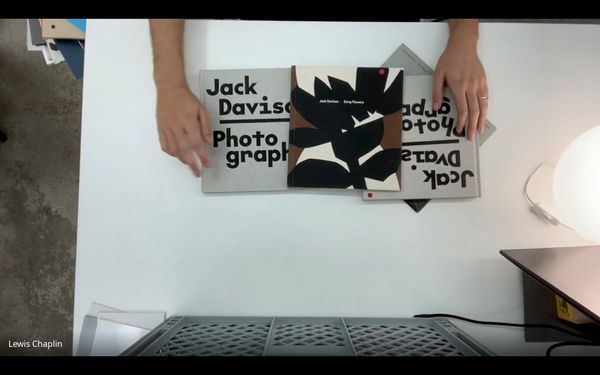FOLIO 2024/25 Alumni Share Insights On The Online Photobook-Making Masterclass
-
Published5 May 2025
-
Author
As we welcome applications for the 6th edition, FOLIO 2024/25 participants share their experience transforming photographs into cohesive narratives within the format of a book.
Delving into the world of photobook creation and publishing, the FOLIO Online Masterclass on Photobook Making is designed to guide participants through the process of finalizing a body of work and preparing it for publication. The upcoming edition, running from October to May 2026, will be led by photographer and graphic designer Nicolas Polli, founder of the independent publishing house Ciao Press.
With enrollment open until 5 June, and the opportunity to apply for a fully-funded scholarship before Thursday 8 May, we touched base with Francisco Canton, Greta Valente, Jack Greenwood, Elo Vázquez, Debbie Castro, Dylan Safranek, and Slavena Todorova, who are just now concluding the 8-month Masterclass under the guidance of Loose Joints' co-founder Lewis Chaplin, and the supervision of Giuseppe Oliverio, PhMuseum's Founding and Artistic Director, and Camilla Marrese, PhMuseum's Visual Editor. Together, we discussed how the Masterclass provided practical support in dummy creation, challenged their preconceived notions about photobooks and offered valuable insights into the publishing world.
You can learn more about their works by joining FOLIO's year-end live presentation next Monday 12 May at 3pm CEST.
Can you briefly describe the research and conceptual development of the book you have been working on during FOLIO?
Francisco Canton: I have been working on a book that features personal work from the last ten years or so. Most of the work has been made in different moments and situations, so I have been basically working on finding an interesting rhythm to the sequencing of it all.
Greta Valente: The research focuses on some examples of cohabitation between human and non-human living in the same territory, namely Aosta Valley. The project tries to bring out a possible harmonious relationship with the surrounding space, in which the human being understands his place within the world, respecting the inviolable boundaries and the fundamental principles that move reality. The work seeks to bring out a relationship of cohabitation through the study of the landscape, examples of folklore with references to the wild, and collaboration with various organisations involved in the reporting, treatment, study of diseases and release of wild animals. For this reason, the research for the book focused on creating a rhythm that would highlight this encounter between humans and non-humans and how they are part of a unique reality. On some pages I had the opportunity to play with paper cuts to emphasize this dialogue between one image and another. The cover of the dummy remains stiff and formal, reminiscent of archive and research documents.
Jack Greenwood: I have been working on a photographic project titled All His Engines, which deals with seeing the ‘everyday’ in a neurodiverse way.
Elo Vázquez: Nine Waves is a personal, retrospective story about searching, waiting, treatments, uncertainty, and rituals during my years of infertility. With this project, I want to shed light on a reality that is usually lived in silence and encourage an open conversation, especially since it will continue to affect future generations: by 2050, 41% of men are expected to be infertile, and assisted reproduction will be necessary for many to conceive. Since I started working on the project when I was already a mother, my research and conceptual development were not strictly like the ones of a documentary work. I had to replicate feelings, and ways of connecting with all the other women that have been through the same — I started reading about fertility rituals and recreating them. There are also portraits of friends’ kids who were born during the five years that I was trying to conceive. With FOLIO I changed the name of the project from Habitat to Nine Waves to incorporate this Spanish fertility ritual as a central element of the book.
Dylan Safranek: As an artist living with mental health issues, years of research have been put into the intersectionality of the human psyche, art and photography, spirituality, and subculture sociology. To The Moon And Back has always been a vessel for expansion, of asking myself the hard questions and trying to understand my family’s reality, father’s death and ultimately about life itself.
Slavena Todorova: During FOLIO, The River is Not Blue evolved as a poetic reflection on the shifting nature of inherited stories. The project explores how memory—like a river—is fluid, elusive, and shaped by perception. Using atmospheric imagery and fragmented narrative, the photobook resists clear interpretation, inviting viewers into a space of ambiguity and reflection.
Debbie Castro: During FOLIO 2024/2025, my research and conceptual development for Age Is A Privilege, Unless You Forget! focused on exploring the emotional and psychological impact of dementia through a personal and universal way. Drawing from my lived experience with my father’s late-stage Alzheimer’s, I combined photography, text, and archival materials to reflect on memory, loss, and identity. The project developed through both personal storytelling and broader conversations about aging, care, and visibility. I also engaged with participants affected by dementia, incorporating their voices and gestures to expand the narrative beyond my own. FOLIO provided the space and critical dialogue to refine the visual language and deepen the conceptual framework of the book, shaping it into a poetic, intimate, and political meditation on what it means to forget —and to be forgotten.
What aspect of photobook-making did you find to be the most challenging and the most enjoyable?
Greta Valente: One of the most fun phases of creating a book is the search for inspiration, where everything is extremely free and possible, excluding future complications. I think another stimulating phase, and certainly the most challenging, is editing. The order of the images and an effective selection are the fundamental body of work and it is often a complex phase to manage because you look at the project from a very subjective point of view. Finally, one of the steps that I enjoyed the most was the physical, home-made creation of the dummy to get a general idea of the work.
Elo Vázquez: Creating Nine Waves has been a challenge in expressing the emotional complexity of infertility—a subject marked by waiting, ambiguity, and feelings that rarely move in a straight line. One of the main difficulties has been how to visually express this emotional landscape, especially since my images live in the same soft, colorful world shaped by memory. The book architecture gave me the key to find the extra layer that I needed: I structured it around nine waves that come and go (inspired by a fertility ritual in Spain where women get washed over nine waves to try to conceive) and framed it with a waiting room — at the beginning and end— to mirror the cyclical nature of hope and uncertainty, loss and desire.
Jack Greenwood: The challenging part was allowing the book’s sequencing to evolve and teach me about the design rather than imposing a set structure on the project.
Slavena Todorova: Coming from an architectural background, the most challenging aspect for me was working without objective rules or fixed frameworks. In architecture, there are often clear constraints—structure, function, scale—whereas in photobook-making, the creative process felt more open-ended and intuitive. Learning to navigate that ambiguity and trust my own voice was both the most difficult and the most enjoyable thing.
Dylan Safranek: The most challenging would be the funding aspect and the hoops that need to be gone through to combat it. The most enjoyable would be the excitement of doing something different.
Debbie Castro: Firstly, the process helped me refine my ideas and realise I needed to collaborate with a graphic designer. As the narrative evolved, it became clear that the visual sequencing, typography, and material choices are just as important as the photographs themselves in conveying the emotional weight of the story. A designer’s expertise (which wasn’t working for me) translated easily the conceptual subtleties—like fragmentation, repetition, and absence—into a cohesive and immersive deconstructed book form. Recognising this need was a turning point that shifted the project greatly (and just letting go and collaborating). It really was an aha moment and also an exhale moment.
Francisco Canton: The biggest challenge has been trying to find the thread that connects all these photographs together. The last book that I worked on was almost documentary-like, and it was easier for me to piece it all together. In this case, I mainly dedicated myself to experimenting with ways of putting independent pieces of work together, trying to find a feeling of cohesion. I think this part was at the same time the most enjoyable one. The most challenging one has been to find a name, which I’m terrible with.
How do you think FOLIO assisted in finalizing your project into a dummy, and more broadly, in your artistic practice? Did your approach and philosophy about the photobook process change?
Dylan Safranek: Healing is a process and I wasn’t quite sure, after my dad died, how long it was going to take for me to wrap up this work and come to terms with all of my shortcomings in being a son as well as a disciplined documentary photographer. There are so many aspects of my relationship to my father that are unrepresentable to the camera and that that I struggled with whether or not to portray. This FOLIO session helped me in finally picking which direction to head in. I think that my philosophy did change a little as well. For a handful of years, I have been feeling disillusioned and disassociated with the photobook world and for that reason I had more maximalist aspirations for the layout of this book but through conversations with this FOLIO cohort, I was able to strip my project down to its basics and see it in a new, quiet and hopefully more inviting, light.
Jack Greenwood: I feel that it enabled me to develop quite a lot of knowledge regarding the economics of book production and distribution (cost, fabrication, papers etc.).
Greta Valente: The practical help, through advice and valuable exchanges, was essential to be able to find a precise path to follow for the realisation of the dummy. Another essential help, in my opinion, are the deadlines. Following deadlines helped me a lot in getting active to create this project. For me, it's crucial that there are fixed dates by which to present progress, which I would certainly tend to underestimate if I had to do everything by myself. I therefore hope that these ideas of contamination, exchange, deadlines and organisation will become an integral part of future processes for creating a photobook. I believe that making a paper product is a fundamental part of the closure of a project and that this also allows a better understanding of it.
Francisco Canton: It helped me by watching how others’ projects came to life, which was quite inspiring. At the same time, I found the deadlines quite useful to make progress.
Elo Vázquez: It helped me see the book not just as a way to present the work, but as an essential part of the work itself. I found elements (recreate a waiting room, create pace through waves) that are now central in the project. My approach and philosophy about the photobook changed as it really opened my eyes to how the book form can add depth and new layers to the photographic work.
Debbie Castro: FOLIO played a crucial role in helping me shape Age Is A Privilege, Unless You Forget! into a fully formed dummy. The structured yet experimental environment allowed me to step back from the emotional weight of the work and critically assess its narrative flow, materials, and intention. Through regular feedback, peer dialogue, and expert guidance, I was able to clarify what the book needed to communicate and how. The process gave me confidence to make bolder decisions—whether that meant stripping back, embracing ambiguity, or inviting collaboration with a designer. More broadly, FOLIO shifted my philosophy around photobook-making. I began to see the book not just as a container for images, but as a performative space—a tactile, time-based experience where every decision, from pacing to paper choice, carries conceptual meaning. It deepened my understanding of the photobook as an artwork in itself. That change in thinking continues to influence how I approach both storytelling and form in my wider artistic practice.
Slavena Todorova: Since this was my first step into an artistic context, I came into FOLIO without an established practice or a clear sense of myself as an artist. The Masterclass was significant not just for helping me shape my project into a photobook dummy, but for allowing me to begin seeing myself as an artist at all. Through exposure to diverse approaches, I started to understand the photobook as a space for experimentation and personal language. My philosophy shifted from trying to “get it right” to embracing the process itself as part of the work.
What did you find the most effective in Lewis's approach and teaching method?
Debbie Castro: What I found most effective in Lewis’s approach and teaching method was his ability to balance critical rigor with genuine care for each artist’s vision. He didn’t impose a formula but instead asked precise, thoughtful questions that helped uncover the deeper intent behind the work. His feedback was always rooted in curiosity rather than judgment, which created a safe space for experimentation and vulnerability. Lewis also has a sharp understanding of photobook language—not just visually, but conceptually and materially—which helped me see how every element of the book could carry meaning. His mentorship pushed me to be more intentional and more ambitious with both form and content.
Francisco Canton: I really enjoyed learning about how Lewis and Loose Joints work so much on the graphic design aspect of the books, and how each theme and concept can inform that process. The most interesting thing was to see how that same process could change from project to project, given how eclectic the body of work of Loose Joints is. I really appreciated how down to earth and accessible everything Lewis showed seemed.
Greta Valente: Lewis’ love for the work of publishing was definitely an important stimulus that encouraged me to expand my knowledge of photobooks. I think one of the strengths of his teaching is the broad culture Lewis has and how he has managed to help all of us by channelling each project towards a well-defined direction, through many examples of projects presented and useful tips. I really appreciated his transparency with regard to possible difficulties and the process of publishing a photographic work.
Elo Vázquez: Lewis has been a key in the process of finding my way in the storytelling, with honest advice based on his endless experience in the editorial world. He also told us everything about how the industry works, and now I have a better understanding of what the next steps are. The One-On-One sessions have been really helpful. He’s fun, kind and down to earth.
Slavena Todorova: Lewis was an exceptional teacher. What stood out most to me was his ability to immediately understand what I was trying to express—even when my thoughts were only half-formed or clumsily articulated. He had a remarkable way of asking the right questions, helping me uncover insights that were already within me but not yet clear. I was also deeply impressed by the wealth of references he effortlessly brought into our conversations, which continually opened up new perspectives for my work.
Dylan Safranek: His experience combined with a youthful wisdom and hopeful approach to current photobook making practices. His approach felt very much so like he believes more can be done with the photobook form and he encouraged each one of us to take a stab at it ourselves while providing us a wide range of knowledge about working with publishers of all sizes and the most cost effective and ethical ways to make a beautiful book.
Jack Greenwood: I felt that Lewis was a fantastic teacher; he really imparted some of his design sensibility throughout the course. When it came to the One-On-One, I felt that we had some very conducive conversations regarding my practice, which has given me much more confidence in my work.
If you were to mention one Studio Visit that stuck to your mind, which one would it be and why?
Jack Greenwood: It was not so much one; I enjoyed having access to the other course seminars, which I felt were very interesting and pushed me to think about my practice in new ways.
Greta Valente: The meeting with Jean-Vincent Simonet was definitely one of the most impactful Studio Visits for me. I was very interested because we discussed his creative process, method, and materiality, topics that are very interesting to me. I think it is very inspiring to see the evolution of an artist and powerful to understand the creative process by talking to him or her.
Elo Vázquez: Fragmentin — I really liked seeing some other ways of storytelling that go beyond the photographic practice.
Francisco Canton: Jack Whitefield as his work resonated with me the most, I liked how messy his studio is (in a good way), and it was great to hear how articulated he was when talking about his practice.
Dylan Safranek: The one with Paolo Cirio. As a firm critic of modern political practices myself, it was really refreshing to see his wide range of socially relevant artworks and to hear his process behind each one.
Slavena Todorova: All of the Studio Visits were incredibly valuable, and it’s hard to single out just one, as each artist brought a unique approach to their research and creative process. Each visit expanded my understanding in different ways, making it impossible to choose only one as the most impactful.
Debbie Castro: Amak Mahmoodian impressed me because of the depth and sensitivity with which she explores identity, memory, and absence - through her personally. Her work fuses photography with archival material, text, and Persian cultural references, and this creates emotionally resonant narratives that feel personal and also expansive. Her work on themes like exile, belonging, and the silence between generations tapped into me personally, but also universal human experience, which makes it quite powerful.
How has your perception of online education evolved? What kind of relationship was created within the group?
Elo Vázquez: I’ve been doing online courses since the pandemic and I find it very convenient. You can get to teachers and professionals that otherwise would be harder or impossible. I enjoyed also seeing the evolution of the other members of the group: we even met a couple of times on our own to share doubts and references about our projects. I can’t wait to meet them in person in Bologna next autumn.
Slavena Todorova: My perception of online education shifted during this Masterclass. I initially doubted how meaningful connections could form virtually, but the group dynamic proved that online spaces can foster strong support and collaboration. The ability to exchange ideas and feedback in such an intimate setting made the experience feel both personal and enriching.
Francisco Canton: I think online education is quite nice as a follow-up, although I appreciate working in person more. In an ideal world, we’d meet a couple of times in person in the same place and then do final sessions online before a final meeting. I find that creates a stronger commitment and opens up the physical aspect of photobook making, which is the most important to me. The group was lovely and there’s been a feeling of collective support from everyone to everyone.
Debbie Castro: The group formed a really supportive, honest community. Even though we were all in different places, there was a strong sense of connection and care. People showed up for each other. It reminded me that meaningful dialogue doesn’t depend on being in the same room—it’s about how present and open we are with each other.
Greta Valente: I've always thought that online education was very interesting because of its flexibility and the possibility of dovetailing with everyday life commitments. In this masterclass, the topic of online meetings was even more important considering the heterogeneity of the group, with people from all over the globe. This was even more interesting in terms of the cultural background that each of us possesses and in terms of the advice we exchanged. There is a lot of desire to share in the group and it is good to know that we can always contact each other for suggestions for the evolution of the project (and more).
Jack Greenwood: I feel like I am much more open to it, and how it can help you develop in new ways.
Dylan Safranek: This was my first online class and I think PhMuseum definitely set a very high bar. The longer length of the class was really enjoyable and allowed me to really think about every session. If things were different for me in my personal life and I had more time and money to put towards experimenting. The group dynamic was really supportive, and I enjoyed everyone’s perspective, although being 6 to 9 hours behind the rest of the group made it hard to attend any meetings outside of the sessions, as they normally took place while I was sleeping.
What recommendations do you have for future FOLIO participants?
Francisco Canton: If you also work on another line of work that is demanding in terms of time, try to have an agenda and respect it so your project doesn’t fall behind the rest of the group.
Debbie Castro: Be open to not knowing all the answers at the start—FOLIO is about discovery. Share generously, stay curious, and don’t be afraid to let your work shift. The conversations, not just the outcomes, will shape your project and your practice. And keep in touch—these connections go far beyond the course.
Greta Valente: Probably the best advice I can offer is to share as much as you can and not to be afraid of making mistakes or being intimidated by doubts that are often crippling. During this experience, I realised how important mutual sharing and cultural influence are and how this is crucial to obtain the best from this opportunity.
Jack Greenwood: I would say keep making work, even when times are hard. I feel that being on the course was great support to keep me going.
Dylan Safranek: Go wild with it. Try to visualize all of your ideas in a way concise enough to get them across with enough time for conversation and feedback. Speak up about your worries and doubts and take advantage of the outside perspective.
Slavena Todorova: My recommendation for future FOLIO participants is to avoid forcing their work into a specific form too early. Instead, they should experiment and play with the material physically as much as possible. I was amazed at how quickly decisions came to me when I allowed myself to engage with the images in an exploratory way, moving them around and seeing them in different contexts. This hands-on approach helped me discover new possibilities for my project that I hadn’t considered before.
Elo Vázquez: Do it. Knowing that you’ll have something in your hands at the end of the course is the most rewarding feeling.
--------------
FOLIO Online Masterclass On Photobook Making is part of PhMuseum's educational program, comprising five different masterclasses that will all share a single intake period running until 5 June, with classes beginning in October 2025. Each course is tailored to meet the needs of emerging photographers, artists, curators, and contemporary storytellers looking to bring their methods to the next level. Check out which program suits you best at phmuseum.com/masterclasses
--------------
Application key dates, scholarships and participation fee
Before 8 May – If you apply by this date, you are eligible for the full scholarship. In your motivational letter, explain why you’d be a strong candidate, and how you would benefit from this support.
Before 8 May – If you apply by this date, you can save €350. All applications submitted for the scholarship will be automatically eligible for the Early Bird Fee of €1,850.
Before 5 June – If you apply by this date, you can join the program by paying the Regular Fee of €2,200. Since applications will be reviewed on a continuous basis, early submissions receive priority for seat allocation.
If you are offered a place, PhMuseum is happy to write you a supporting letter when you try to secure any external funding opportunities. In previous editions of our masterclasses program, the candidates' fees were covered thanks to the generous contribution of the IWMF Howard G. Buffett Fund for Women Journalists, Mondriaan Fonds, Arts Council Malta, and other programs. Read our guide to 2025 Education Funding for Visual Artists about opportunities that can help you secure funding.
